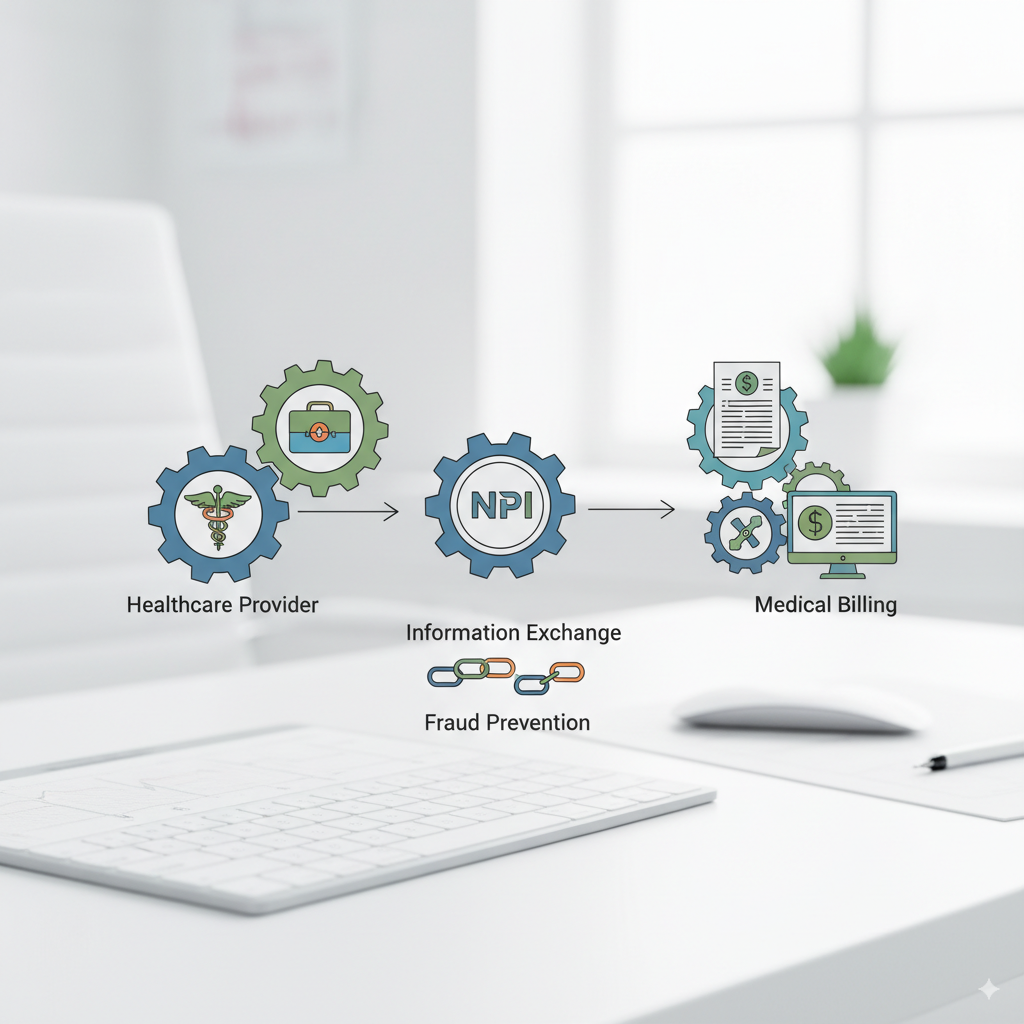The National Provider Identifier (NPI) is a unique 10-digit identification number assigned to healthcare providers in the United States. It’s used across the healthcare system to clearly identify who delivered care in HIPAA standard transactions, ensuring that claims and billing are processed smoothly and accurately. All physicians, chiropractors, nurse practitioners, or part of a group practice must use NPI because it works as their digital signature in the medical billing field.
But that’s not enough to know about the role of NPI, as it involves a lot more than just being a number. If you want to know, then let’s discuss why it’s such a big deal, how it affects your reimbursements, or why payers won’t even look at your claim without it.
Why the NPI Was Introduced in the First Place
Before 2007 (when NPIs became mandatory), healthcare providers had a mixture of identifiers like UPINs (Unique Physician Identification Numbers), state-issued IDs, and sometimes even insurance-specific numbers. These multiple usernames and passwords for the same accounts were confusing. That’s why the Health Insurance Portability and Accountability Act (HIPAA) seeks to introduce a universal identifier to overcome these confusions.
And NPI was created as a universal identifier and recognized nationwide. No matter where you practice, what specialty you’re in, or which insurance company you’re billing, the NPI became the single and standardized way to identify you as a provider. That move not only simplified life for providers but also reduced billing errors, simplified claims, and made the entire healthcare system less confusing.
Who is Eligible for NPI?
Anyone who qualifies as a healthcare provider can get a National Provider Identifier (NPI). Under federal regulations (specifically 45 CFR 160.103), both individuals and organizations that deliver healthcare services are eligible. An NPI becomes necessary if you’re a HIPAA-covered provider.
Now shifting towards medical billing, it’s worth noting that if you’re a provider who bills Medicare or Medicaid, you must have an NPI before you can even submit claims. The same applies if you work with commercial health plans—NPIs are the universal ID that links you to the services you provide, no matter the payer.
The Two Types of NPIs: Type 1 and Type 2
One common point of confusion is that there are actually two categories of NPIs. Type 1 and Type 2.
Type 1 NPI (Individual Providers):
This is for all the individual licensed practitioners, like physicians, chiropractors, nurse practitioners, dentists, or therapists. If you’re a person delivering care and bills for your services, you need your own personal Type 1 NPI.
Type 2 NPI (Organizational Providers):
This one is for group practices, clinics, hospitals, nursing homes, pharmacies, urgent care centers, labs, or any entity providing healthcare services as an organization. If an organization submits claims or bills for healthcare services, it must have its own NPI in addition to the individual NPIs of its providers.
For example, solo practitioners need two NPIs: one for themselves (Type 1) and another for their practice as a business entity (Type 2), especially if they bill under the practice’s name and tax ID.
Why NPIs Are So Important in Medical Billing
NPIs are just like an anchor of your medical billing process. Without it, the payer doesn’t know exactly who’s requesting reimbursement. And when insurers can’t clearly identify the provider, claims get rejected or delayed. That’s why NPI plays a critical role:
- Claim Accuracy: It ensures the right provider is paid to the right patient services.
- Compliance: Using the NPI is a HIPAA requirement, so you’re not just following best practices—you’re following the law.
- Credentialing & Contracting: Payers use NPIs to credential providers and set up contracts. No NPI means no network participation.
- Fraud Prevention: NPIs help insurers and regulators track services to prevent identity mix-ups or fraudulent billing.
- Seamless Communication: As its universal code, all systems like insurance, clearinghouses, Medicare/Medicaid can recognize it.
Basically, no NPI means no reimbursement.
Getting Your NPI
Sometimes, providers don’t know where to get an NPI. But the good thing is that applying for an NPI is free and relatively easy. You can do it online through the National Plan and Provider Enumeration System (NPPES). To apply for an NPI:
- Go to the NPPES website.
- Fill out the online application.
- Submit the required information like personal details for Type 1, business info for Type 2.
- Receive your NPI via email—sometimes within 24 hours.
Once you have it, you keep it for life. Even if you move states, change specialties, or switch practices, your NPI stays the same.
Where the NPI Shows Up in Billing
If you look at a CMS-1500 form, which is the standard claim form for professional billing, you’ll notice NPIs show up in different boxes.
- Box 24J: Rendering provider’s NPI.
- Box 32A: Service facility’s NPI (if different from the provider).
- Box 33A: Billing provider’s NPI (often the Type 2 organizational NPI).
So, depending on your setup, whether you’re a solo practitioner, part of a group, or working under a larger facility, you need to include more than one NPI on a claim. Missing or mismatched NPIs are one of the most common reasons claims bounce back.
How NPIs Tie Into Credentialing
Insurance companies not only use NPI to process claims but also use it during credentialing, where insurers verify a provider’s qualifications before allowing them to bill under the network. During the credentialing process, the payer links your NPI with your licensure, specialty, tax ID, and practice location. Any discrepancy here, like one address on your NPI but another one on your application, can cause delays and rejections. That’s why it is important to keep your NPI information accurate and consistent across all documents.
NPIs and Medicare/Medicaid
NPI is mandatory for the federal payers like Medicare and Medicaid. These programs use NPIs to integrate provider data into their massive systems. In fact, if you try to submit a claim to Medicare without the correct NPI, it’ll be rejected instantly. Medicaid is especially strict because many providers participate in multiple state programs. But the universal NPI prevents duplication and keeps things streamlined nationwide.
NPIs and Electronic Health Records (EHRs)
NPIs are not just compulsory for claims but also necessary for the entire healthcare ecosystem. Your electronic health record (EHR) system uses NPIs to match providers to patients, prescriptions, and referrals. Pharmacies, labs, and imaging centers also rely on NPIs for identification. So not only in billing, NPIs are also used to keep the digital trail consistent and accurate even outside the billing world.
Common NPI Mistakes That Cause Claim Denials
It doesn’t matter if you have an NPI but using it correctly is what keeps your cash flow consistent. Some common mistakes include:
- Mixing up Type 1 and Type 2 NPIs. For example, using a provider NPI where the organizational NPI should be listed.
- Failing to update information. If your practice changes its address or ownership, you must update NPPES. Otherwise, claims can be denied for an invalid NPI.
- Omitting NPIs on claim fields. Leaving a box blank is practically a direct link to denial.
- Using someone else’s NPI. This sounds very rare, but it still happens. Not only will it lead to denials but it can also trigger audits and compliance headaches.
Consequences of using inaccurate NPI
If your NPI is missing, outdated, or misused, you’ll face:
- Claim denials or delays.
- Lost revenue, as sometimes claims can’t be resubmitted after a certain window, so you lose money entirely.
- Compliance risks. HIPAA violations always result in penalties.
- Credentialing setbacks. Payers can even remove you from their network if NPI misuse becomes a pattern.
Ignoring NPI requirements means you are risking your whole career.
Tips to Keep Your NPI in Good Standing
- Double-check that you’re using the right type (Type 1 vs. Type 2).
- Update NPPES any time your address, practice name, or ownership changes.
- Make sure staff entering claims know where to place NPIs on forms.
- Audit your claims regularly for NPI-related denials.
- Keep both provider and organizational NPIs on file and clearly labeled.
Choose the Right Medical Billing Partner
NPI errors are common and cause the claim to be denied but with the right medical billing partner like M&M Claims Care, these errors can be reduced. We provide you with NPI monitoring and compliance support for smooth revenue cycle management. The goal of M&M Claims Care is not just to provide services but also to keep provider and organizational information up to date and save them from compliance issues. As an experienced medical billing company, we take complete responsibility for all your billing tasks and ensure consistent cash flow.
FAQs
What is an NPI number in healthcare?
An NPI (National Provider Identifier) is a unique 10-digit number assigned to healthcare providers and organizations in the U.S. It’s used to identify you in medical billing, claims, and electronic healthcare transactions. NPI is your universal ID across the healthcare system.
Who needs an NPI?
Any healthcare provider or organization that bills health plans, Medicare, or Medicaid must have an NPI. That includes individual providers like doctors, nurse practitioners, and therapists, as well as organizations like hospitals, group practices, and labs.
What’s the difference between a Type 1 and Type 2 NPI?
- Type 1: For individual providers (like physicians, dentists, or therapists).
- Type 2: For organizations or facilities (like clinics, hospitals, and pharmacies).
Is an NPI the same as a tax ID?
No! They’re different. Your NPI identifies you as a healthcare provider, while your Tax ID (EIN) identifies your business for tax purposes. Many claims require both numbers in different fields.
Do solo practitioners need both Type 1 and Type 2 NPIs?
In many cases, yes. A solo practitioner always needs a Type 1 NPI for themselves as an individual provider. If they bill under a business entity (with its own tax ID), they may also need a Type 2 NPI for the practice.
How do I apply for an NPI?
You can apply online through the National Plan and Provider Enumeration System (NPPES). The application is free, and most providers receive their NPI within a couple of days.
Is there a cost to get an NPI?
No, getting an NPI is completely free. If someone tries to charge you for applying, it’s the wrong side—you should only use the official NPPES website.
Can a provider have more than one NPI?
An individual provider can only have one Type 1 NPI that stays with them for life. However, the organization they work for may have its own Type 2 NPI. So you may use both depending on the billing situation, but your personal NPI never changes.
Do NPIs expire?
No, NPIs don’t expire. Once you get one, it’s yours for life—even if you change states, specialties, or employers. The only thing you need to do is keep your information updated in NPPES.
What happens if I don’t use my NPI on claims?
Your claims will almost certainly be denied. Insurers, including Medicare and Medicaid, require NPIs to process claims. Without one, you won’t get paid for your services.
How long does it take to get an NPI number?
Most providers receive their NPI within 24–48 hours after applying online, although it may take up to a few weeks in some cases.







